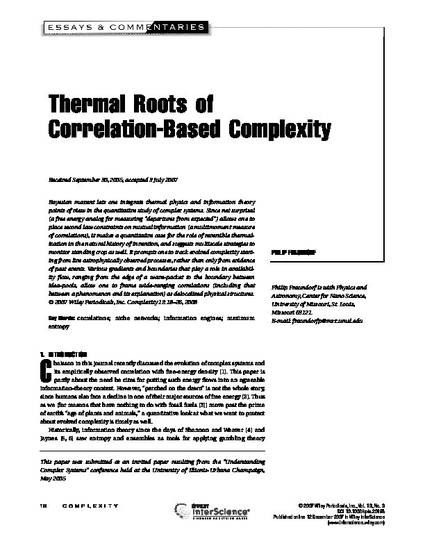
Article
Thermal Roots of Correlation-Based Complexity
Complexity
(2008)
Abstract
Bayesian maxent lets one integrate thermal physics and information theory points of view in the quantitative study of complex systems. Since net surprisal (a free energy analog for measuring “departures from expected”) allows one to place second law constraints on mutual information (a multimoment measure of correlations), it makes a quantitative case for the role of reversible thermalization in the natural history of invention, and suggests multiscale strategies to monitor standing crop as well. It prompts one to track evolved complexity starting from live astrophysically observed processes, rather than only from evidence of past events. Various gradients and boundaries that play a role in availability flow, ranging from the edge of a wave‐packet to the boundary between idea‐pools, allow one to frame wide‐ranging correlations (including that between a phenomenon and its explanation) as delocalized physical structures.
Disciplines
Publication Date
January 1, 2008
DOI
10.1002/cplx.v13:3
Citation Information
Philip Fraundorf. "Thermal Roots of Correlation-Based Complexity" Complexity Vol. 13 Iss. 3 (2008) p. 18 - 26 Available at: http://works.bepress.com/phil-fraundorf/34/
